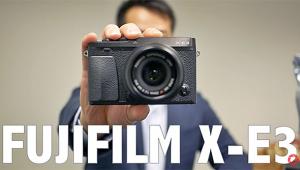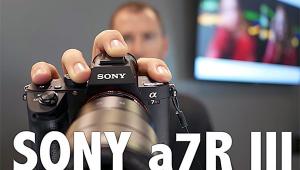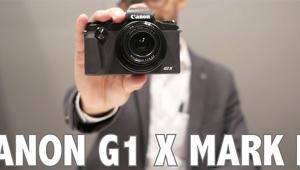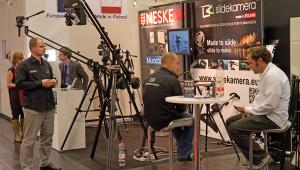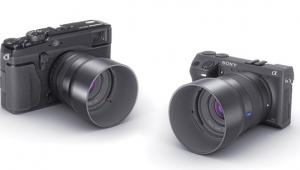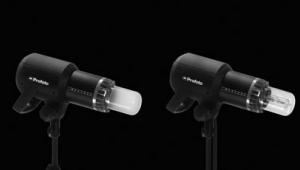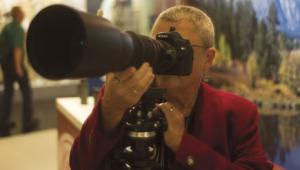Products of the Future: Canon Expo 2015 Offers Sneak Peek At Forthcoming Imaging Tech

Courtesy of Canon U.S.A., Inc.
Canon held its once-every-five-years Canon Expo 2015 show in New York City last September where the Tokyo-based company pulled back the curtain on some potentially groundbreaking imaging technology. Part science lab and part marketing showcase, the event drew tens of thousands of buyers, dealers, and distributors of Canon products (along with a large group of journalists) eager to see what the company had up its sleeve.
Those looking to catch a glimpse at the potential future of imaging technology were not disappointed. Here’s a rundown of the highlights from Canon Expo 2015, some of which you might be seeing soon at a camera store near you.

New Image Sensor Technology
One of the bigger ticket items at Canon Expo 2015 was the company’s new 250-megapixel (19,580x12,600 pixels), APS-H-size (approx. 29.2x20.2mm) CMOS imaging sensor. (For those keeping score at home, that’s the most pixels ever placed on a CMOS sensor smaller than a 35mm full-frame sensor.)
Not only was the 250MP sensor being shown off at Expo 2015, Canon also had a prototype camera—with a very long lens attached—fitted with the new megachip.
To demonstrate what the ultrahigh-resolution sensor could do, a video displayed massively cropped footage shot by the prototype 250MP camera showing someone waving from the Eiffel Tower from 11 miles away. While the usage of such an incredibly high-resolution product might seem limited for traditional photographers, the applications for security and surveillance seem bountiful.
A working version of the 120MP DSLR Canon announced it was developing was also on display at the show as part of a mock studio photography setup.
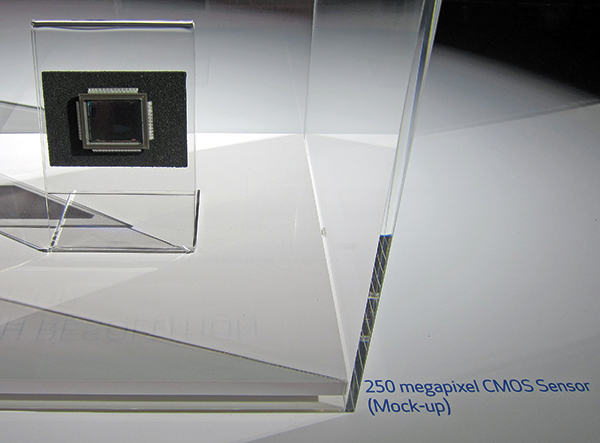
The 120MP camera concept was interesting but who on earth would need such a high-resolution sensor in a DSLR? According to Canon U.S.A. spokesperson Chuck Westfall, a high-resolution DSLR of this magnitude might appeal to product and commercial photographers.
“Product photography is one of the areas we were thinking about [when developing the 120MP camera],” Westfall told Shutterbug. “But it might also appeal to architectural photographers or another type of photographer where you need to capture incredibly fine amounts of detail.”
Canon also showed off a concept version of its forthcoming 8K Cinema camera, which is part of a big push the company is making for 8K products of the future, including an 8K reference display. (Those folks out there who aren’t even on board with 4K yet might be scratching their heads right now.)
Still though, an immersive 8K demo movie the company was screening at the show, which made you feel like you were riding on trains and flying over small villages in Europe, along with the impressively sharp, high-resolution still photos pulled from 8K footage and turned into gorgeous prints, made it seem like there might be some viability for this technology.
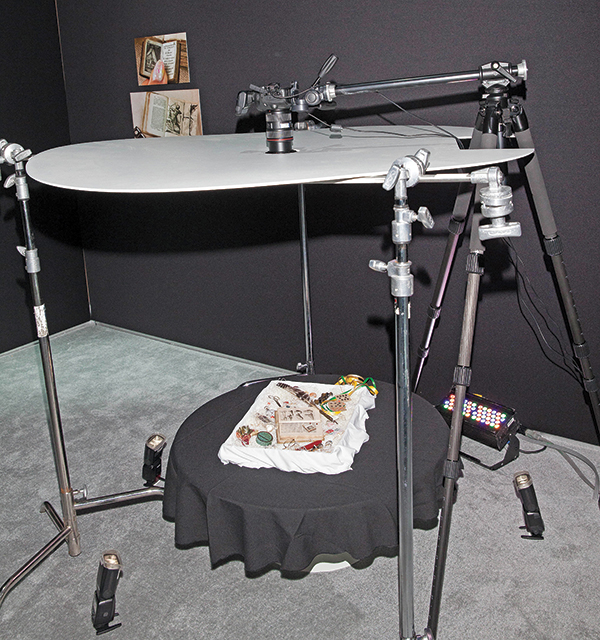
Courtesy of Canon U.S.A., Inc.
And finally in the sensor realm, Canon had its ultrahigh sensitivity 35mm full-frame CMOS sensor on display at the show. The chip is being fitted into a new camera system, the ME20F-SH, that’s slated to go on sale in December 2015. The Canon ME20F-SH’s big claim to fame, so far, is that it can shoot at an ISO sensitivity of over 4,000,000, which allows the camera to virtually see in the dark.
The applications for such a product? Well, along with the requisite nighttime surveillance and security possibilities, Canon thinks it may be suited for cinematic production, reality television, and nature/wildlife documentaries.
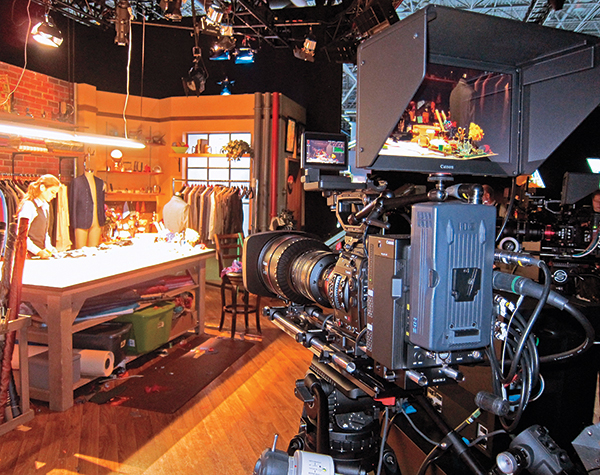
Unless otherwise indicated, photos © Dan Havlik.
New Lens Technology
One of the more intriguing developments for photographers at Canon Expo 2015 was some innovative lens technology seemingly hidden away behind an elaborate recreation of Yankee Stadium at the show. The stadium, complete with actors playing Yankees and Expos baseball teams, was meant to demonstrate Canon’s current lens offering.
But squirreled away on the side was a new concept 600mm f/4 lens that was designed to be significantly shorter and lighter than current super-telephoto offerings.
There was actually a working version of the lens, which combines Canon’s older Diffractive Optics (DO) technology with the new Blue Spectrum Refractive Optics (BR Optics) technology to, theoretically, produce a shorter, more portable lens with better image quality.
According to Canon, their DO/BR Optics 600mm f/4 lens will be 30 percent smaller than conventional super-telephoto lenses.
“By combining Diffractive Optics with BR Optics, it keeps the size of the lens down while getting rid of Chromatic Aberrations,” Westfall said.


New Printing Technology
For photographers who like to print, Canon had several interesting developments at Expo 2015. For one, a new fleet of 12-ink, professional-level inkjet printers in 17-inch, 24-inch, and 44-inch sizes were prominently on display.
There was not a ton of info on these forthcoming pro photo printers at the show but they seemed very close to finished products. In fact, it’s likely these new Canon pro printers have already made their official debut by the time you’ve read this.
Relatedly, Canon was also showing off several new “textural” printing concepts at the show. One that really caught my eye was a printing service that rendered images as three-dimensional objects with the subject of the photo pushing off the surface of the print. You can see it below in the image of the runner, though you really need to touch it in person to get the full effect.
I could see many photographers gravitating to this type of printing, since it offers such a unique treatment for photos. This unique printing tech, however, has a somewhat unimpressive name: Canon Super Creative Printing Technology.
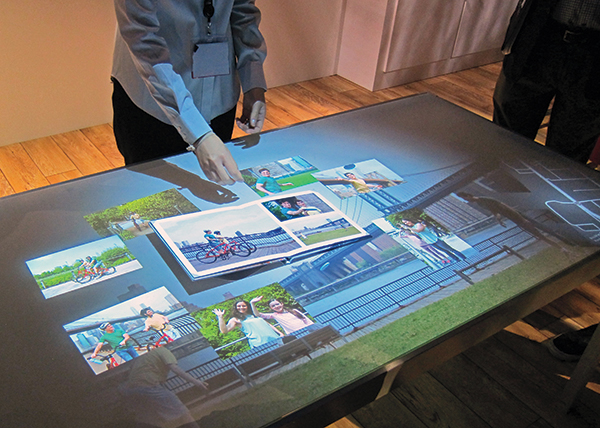
Virtual Technologies
Two other product demonstrations stood out for me at Canon Expo 2015. One, in the “Home” section of the show, presented an interactive table display that allowed you to plop a camera down onto it, pull out photos and videos by swiping them with your hand and start sharing them. You could also turn them into automated orders for prints or photo books.
This was all very high concept and seemed to be more of a canned demonstration than a live, achievable service. Still though, the wireless, gesture-based inactivity of the demo looks like something that would appeal to all the soccer moms and dads out there who don’t want to deal with all the clumsy wires and tortuous download and upload times required to get photos from your camera and out into the world.
You’d think we’d have moved on from this antiquated process by now but as evidenced by this future-thinking Canon demo, it’s not there yet.
And finally, for all the super geeks out there, Canon was demoing a new High-Resolution Handheld Display device, which is the company’s latest take on the long sought-after Virtual Reality (VR) market. (Canon has been in the industrial VR market for a while now with its MREAL System.)
Holding a pair of uncomfortable Canon-branded goggles (and headphones with heavy cords), I was able to have a 360-degree, virtual reality-like video and audio experience, where I watched and heard Flamenco singers and dancers perform for me in an immersive experience.
I’ve tried VR devices before and have always found them to not be worthy of the hype. In this case, however, Canon offered a vision of the future that seemed bright.
